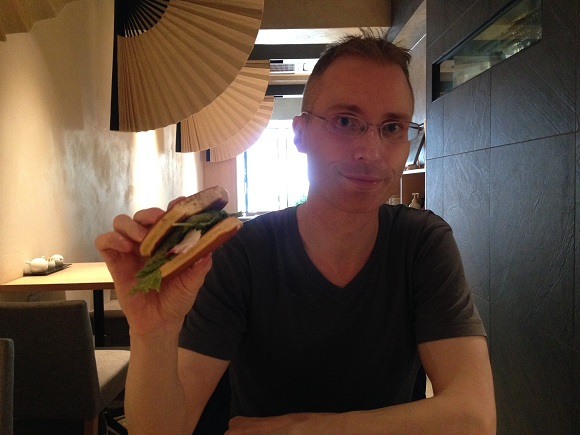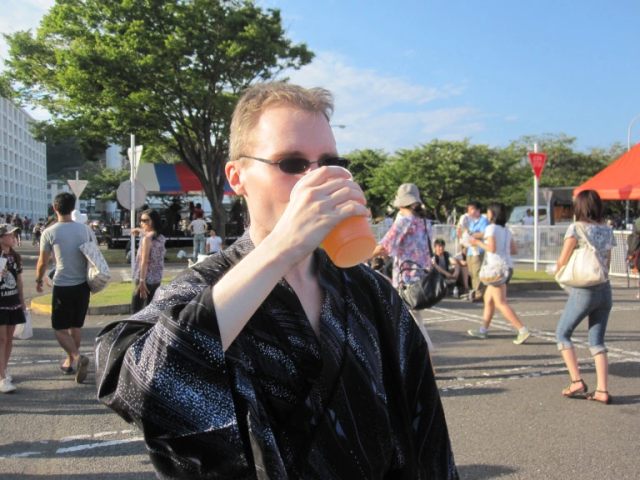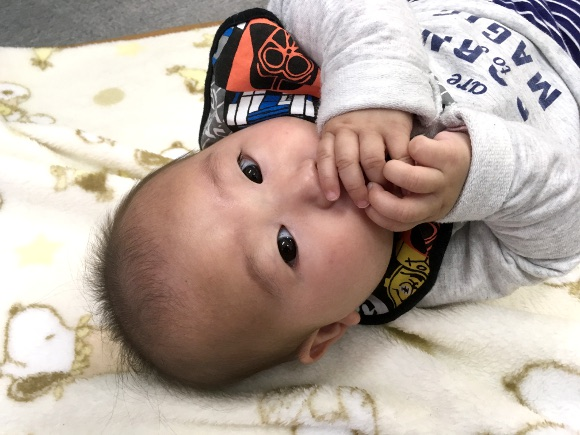
But if Tokyo somehow seems even more crowded to you, you’re not mistaken.
Many people in Japan were recently surprised to learn that, by certain geographic measures, the country is as big as Europe. On the other hand, perceptions about the country’s diminishing size in terms of population have been once again confirmed by the Ministry of Internal Affairs and Communications.
On Wednesday, the ministry released the results of its annual population census, with a total tally of 125,209,603 people residing in Japan as of January 1 of this year. That’s 374,055 less than last year, the ninth consecutive annual drop and the biggest dip since the organization began keeping such records in 1968.
If that has you wondering why downtown Tokyo feels so crowded, it’s because the nation’s capital actually saw its population rise by 0.55 percent, with smaller gains also reported for the neighboring prefectures of Kanagawa, Saitama, and Chiba, as well as Aichi (which includes the city of Nagoya) and Okinawa Prefectures. On the other end of the spectrum, despite a large number of young city dwellers saying they’re thinking of giving up big city life and moving to the country, the largest population drop, 1.3 percent, occurred in mostly rural Akita Prefecture.
But while Japan’s overall population continues to shrink, its foreign population is now larger than ever. The number of foreigners residing in Japan (classified as those with visas with durations of over three months) rose by roughly 7.5 percent to 2,497,656 people. Increases in the foreign population were observed in 46 of Japan’s 47 prefectures, with the sole exception being Nagasaki, ironically one of the first regions of Japan to have historically significant contact with other nations.
▼ One of Japan’s foreign residents
As for non-immigration-based methods of increasing population, less than a million births took place in Japan for the year, with the 948,396 babies being born representing the lowest figure since 1979, which is as far back as the ministry’s records go. Okinawa was the sole prefecture to have more births than deaths for the year.
▼ If you’ve ever struggled to get a screaming baby to fall asleep, 948,396 seems like a lot, but on a nationwide scale, it’s really not.
The low number of births, naturally, is also shifting the population towards being older as a whole. The ministry’s data showed 74,843,915 people between the ages of 15 and 64 (the block between the end of compulsory education and the common retirement age in Japan), which calculates to 59.77 percent of the total population, the first time on record that demographic has dipped below 60 percent. Children 14 and under accounted for 12.57 percent of the populace, with those 65 and over making up the remaining 27.66 percent.
With no change to these trends in sight, Japan’s population is likely to continue to become smaller and older as time goes by. Hopefully the country’s elderly care workers will be prepared to give them the medical and emotional support they need, or to at least stop them from getting into street fights with bladed instruments.
Source: Ministry of Internal Affairs and Communications via Nihon Keizai Shimbun via Jin
Images ©SoraNews24
Follow Casey on Twitter, whee he’s happy to be one of the 2,497,656.



 Japan’s foreign population reaches historic milestone following largest-ever single-year surge
Japan’s foreign population reaches historic milestone following largest-ever single-year surge Japan’s Japanese population dropping in every part of the country, foreign population rising
Japan’s Japanese population dropping in every part of the country, foreign population rising The Tokyo area welcomed more new foreign residents than Japanese ones last year
The Tokyo area welcomed more new foreign residents than Japanese ones last year The number of elderly people in Japan this year has yet again smashed multiple records
The number of elderly people in Japan this year has yet again smashed multiple records Japan suffers 37th consecutive year of low birthrate, Japanese people may become extinct someday
Japan suffers 37th consecutive year of low birthrate, Japanese people may become extinct someday How to order snacks on a Shinkansen bullet train in Japan
How to order snacks on a Shinkansen bullet train in Japan Japan’s new difficult-to-drink-from beer glass protects your liver, but it’s a brutal experience
Japan’s new difficult-to-drink-from beer glass protects your liver, but it’s a brutal experience Hello, cosmetics! Clinique teams up with Hello Kitty this summer for first-time collaboration
Hello, cosmetics! Clinique teams up with Hello Kitty this summer for first-time collaboration Demon Slayer: Kimetsu no Yaiba gets new roller coaster attractions and food at Universal Studios Japan
Demon Slayer: Kimetsu no Yaiba gets new roller coaster attractions and food at Universal Studios Japan New Nintendo Lego kit is a beautiful piece of moving pixel art of Mario and Yoshi【Photos】
New Nintendo Lego kit is a beautiful piece of moving pixel art of Mario and Yoshi【Photos】 High-fashion Totoro cuddle purse is like an elegant stroll in the forest【Photos】
High-fashion Totoro cuddle purse is like an elegant stroll in the forest【Photos】 New samurai glasses are Japan’s latest weird must-have souvenir
New samurai glasses are Japan’s latest weird must-have souvenir Beautiful Legend of Zelda Lego set is series’ first buildable block crossover【Photos】
Beautiful Legend of Zelda Lego set is series’ first buildable block crossover【Photos】 How to properly eat a traditional Japanese tonkatsu meal
How to properly eat a traditional Japanese tonkatsu meal Secretive Ghibli Museum starts video diary to give glimpse inside anime attraction【Videos】
Secretive Ghibli Museum starts video diary to give glimpse inside anime attraction【Videos】 Nintendo history you can feel – Super NES, N64, and GameCube controllers become capsule toys
Nintendo history you can feel – Super NES, N64, and GameCube controllers become capsule toys “The most Delicious Cup Noodle in history” – Japan’s French Cup Noodle wins our heart【Taste test】
“The most Delicious Cup Noodle in history” – Japan’s French Cup Noodle wins our heart【Taste test】 Starbucks releases a cute Frappuccino and Unicorn Cake…but not in Japan
Starbucks releases a cute Frappuccino and Unicorn Cake…but not in Japan Kyoto Tower mascot termination reveals dark side behind cute Japanese characters
Kyoto Tower mascot termination reveals dark side behind cute Japanese characters McDonald’s Japan’s Soft Twist Tower: A phantom ice cream only sold at select branches
McDonald’s Japan’s Soft Twist Tower: A phantom ice cream only sold at select branches Yabai Ramen: What makes this Japanese ramen so dangerous?
Yabai Ramen: What makes this Japanese ramen so dangerous? Finally! Nintendo Japan expands Switch 8-bit controller sales to everybody, Online member or not
Finally! Nintendo Japan expands Switch 8-bit controller sales to everybody, Online member or not Japanese government wants to build luxury resorts in all national parks for foreign tourists
Japanese government wants to build luxury resorts in all national parks for foreign tourists To combat declining birth rate, Japan to begin offering “Breeding Visas” to foreigners
To combat declining birth rate, Japan to begin offering “Breeding Visas” to foreigners 10 things you should buy at 7-Eleven in Japan
10 things you should buy at 7-Eleven in Japan Studio Ghibli releases anime heroine cosplay dresses that are super comfy to wear
Studio Ghibli releases anime heroine cosplay dresses that are super comfy to wear Woman charged for driving suitcase without a license in Osaka
Woman charged for driving suitcase without a license in Osaka Studio Ghibli unveils My Neighbour Totoro miniature house model
Studio Ghibli unveils My Neighbour Totoro miniature house model Kyoto experiencing problems with foreign tourists not paying for bus fares, but not on purpose
Kyoto experiencing problems with foreign tourists not paying for bus fares, but not on purpose Fighting mild hunger with a Japanese soda that turns into jelly in the stomach【Taste test】
Fighting mild hunger with a Japanese soda that turns into jelly in the stomach【Taste test】 Studio Ghibli’s Howl’s Moving Castle tapestry unveiled in Japan for first time
Studio Ghibli’s Howl’s Moving Castle tapestry unveiled in Japan for first time McDonald’s new Happy Meals offer up cute and practical Sanrio lifestyle goods
McDonald’s new Happy Meals offer up cute and practical Sanrio lifestyle goods Sales of Japan’s most convenient train ticket/shopping payment cards suspended indefinitely
Sales of Japan’s most convenient train ticket/shopping payment cards suspended indefinitely Sold-out Studio Ghibli desktop humidifiers are back so Totoro can help you through the dry season
Sold-out Studio Ghibli desktop humidifiers are back so Totoro can help you through the dry season Japanese government to make first change to romanization spelling rules since the 1950s
Japanese government to make first change to romanization spelling rules since the 1950s Foreigner’s request for help in Tokyo makes us sad for the state of society
Foreigner’s request for help in Tokyo makes us sad for the state of society Ghibli founders Toshio Suzuki and Hayao Miyazaki contribute to Japanese whisky Totoro label design
Ghibli founders Toshio Suzuki and Hayao Miyazaki contribute to Japanese whisky Totoro label design Doraemon found buried at sea as scene from 1993 anime becomes real life【Photos】
Doraemon found buried at sea as scene from 1993 anime becomes real life【Photos】 Tokyo’s most famous Starbucks is closed
Tokyo’s most famous Starbucks is closed Princesses, fruits, and blacksmiths: Study reveals the 30 most unusual family names in Japan
Princesses, fruits, and blacksmiths: Study reveals the 30 most unusual family names in Japan Japan reports fewer children and more elderly people for 35th year in a row
Japan reports fewer children and more elderly people for 35th year in a row This is a pretty worrying chart for China’s demographic future
This is a pretty worrying chart for China’s demographic future Fewer Japanese people got married last year than any time since the end of World War II
Fewer Japanese people got married last year than any time since the end of World War II Government study finds only 3,065 homeless people in Japan
Government study finds only 3,065 homeless people in Japan Tokyo experiences drop in population for seventh consecutive month
Tokyo experiences drop in population for seventh consecutive month Which prefecture has the most chilled young people? Survey asks 20 year olds “what are you worried about?”
Which prefecture has the most chilled young people? Survey asks 20 year olds “what are you worried about?” One in four young people in Japan’s biggest cities thinking of moving to the countryside【Survey】
One in four young people in Japan’s biggest cities thinking of moving to the countryside【Survey】 Japanese Self-Defense Force mulls removing its ban on tattoos
Japanese Self-Defense Force mulls removing its ban on tattoos Ministry of Health, Labor, and Welfare reveals the five prefectures with highest divorce rates
Ministry of Health, Labor, and Welfare reveals the five prefectures with highest divorce rates Japan’s suicide number drops for eighth straight year, rises among teens
Japan’s suicide number drops for eighth straight year, rises among teens Ridesharing services legalized for Tokyo and Kyoto, but does this change anything?
Ridesharing services legalized for Tokyo and Kyoto, but does this change anything? Sturgeons in Japanese village outnumber human population, used as marketing strategy
Sturgeons in Japanese village outnumber human population, used as marketing strategy If Japanese men “have their act together,” Japanese women will reward them with babies, politician says
If Japanese men “have their act together,” Japanese women will reward them with babies, politician says Meet the the 90-year-old Japanese woman who is McDonald’s Japan’s oldest female employee
Meet the the 90-year-old Japanese woman who is McDonald’s Japan’s oldest female employee Top five Japanese prefectures for childhood education expenditure would make any wallet shudder
Top five Japanese prefectures for childhood education expenditure would make any wallet shudder Got a cell phone? Soon, you might get a tax bill from the Japanese government too
Got a cell phone? Soon, you might get a tax bill from the Japanese government too Kansai area people more genetically predisposed to liking coffee than elsewhere in Japan
Kansai area people more genetically predisposed to liking coffee than elsewhere in Japan
Leave a Reply